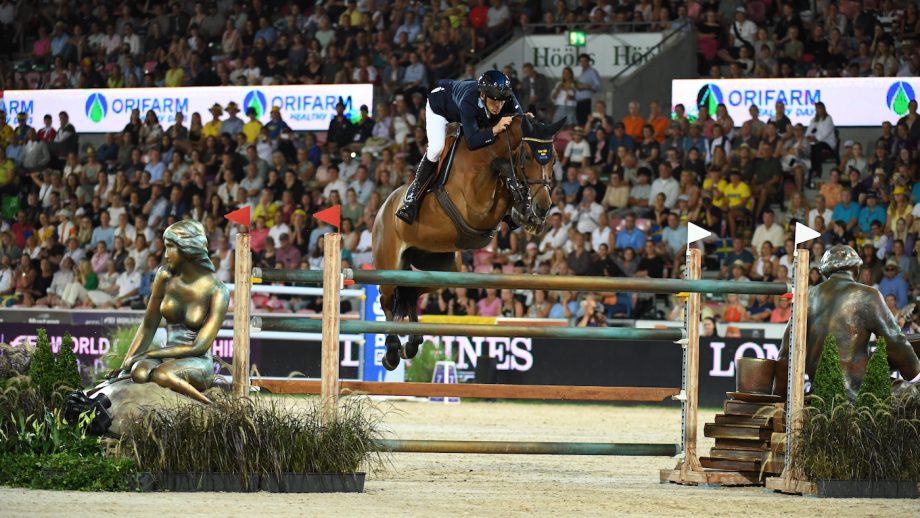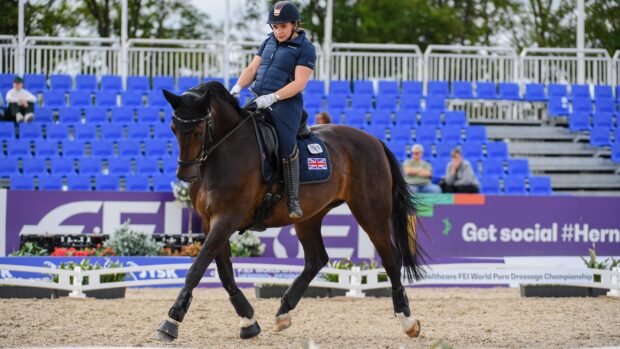Unshod hooves show increased widening and contraction, and so a greater range of motion, than those with shoes, a study has found.
The second phase of results from research into the impact of shoeing on equine movement has been released, showing that the internal movement of the hoof is affected by shoeing.
H&H reported on the project, involving top showjumper Peder Fredricson, vet Staffan Lidbeck and Lars Roepstorff, professor and researcher from the Swedish University of Agricultural Sciences, and sponsored by insurer Agria’s research fund, last year. The finding announced then was that when unshod, the movement in the hoof is “freer and larger”, specifically widening over the heels, and contraction of heels during the breakover. There was also more vertical independent movement in the barefoot hoof.
It has now been revealed that in barefoot horses, compared to shod, there is 50% more expansion across the quarters of the hoof, increased widening, and increased contraction during the breakover, and increased contraction just before the hoof hits the ground. It was also found that the inner and outer quarters have more vertical mobility in relation to each other.
“What’s probably the most important thing is to be able to quantify,” Prof Roepstorff told H&H. “There are things we know, they’re not a surprise, but from a scientific point of view, it’s important to prove it.”
Prof Roepstorff said it is important not to generalise too much. These results were from tests; using markers, video and motion analysis on horses working on the flat and over jumps, shod and unshod, to try to measure any differences in movement. And although they were very detailed, there were only eight horses involved.
“This is the foundation for further work; that was the intention of this pilot study,” he said.
“I also want to stress that we haven’t said whether what we’ve found is good or bad. Of course we can hypothesise that this increased movement is good for the health of the horse; we interviewed riders at the very top of the sport and they all told me being barefoot improves not only performance but the horses’ health. But this is important for future studies because we know what to look at.”
Prof Roepstorff said the team also found that the horses did not lift their limbs as much when they were unshod, so there was less flexion of joints, and the hoof spent more time in contact with the ground.
“If you look at human athletes, that’s talked about; having more time interacting with the ground to accelerate or decelerate, or turn,” he said. “That’s interesting. We also saw increased stride frequency; in a jump-off, the horse with the highest stride frequency can move faster. We can only speculate whether top riders like Henrik von Eckermann and Peder choose horses with higher stride frequency or if that’s part of riding without shoes, but it’s interesting.”
Prof Roepstorff stressed, as the team did before, that they are not saying barefoot is necessarily better, or right for all horses; each one is an individual and should be treated as such. Future work may help identify which horses are better unshod, or shod in a particular way.
Peder told H&H that those of his horses who are more comfortable shod have shoes, and those who are more comfortable without are barefoot.
“All extra information we can gain is interesting,” he said. “It doesn’t matter if they’re barefoot or shod; the more we know about how the hoof works, the better we understand the horse. This is valuable for me as a rider but also for farriers, owners and vets; information and knowledge is the key.”
Peder said the research should be called the hoof study rather than the barefoot study as this is what it investigated, and that from it we can draw conclusions.
“It’s very individual from horse to horse,” he added. “There are lots of factors and this study doesn’t go into all of them; we were just checking what happens in the hoof. We’re not saying barefoot is better than shod, or that we should shoe this way or that; just looking at what happens. It’s like feeding, shoeing, everything; if you want improvement you have to try to learn how things work.”
You might also be interested in:

‘I saw the horses getting sounder’: first findings from study into barefoot v shod horses’ movement

‘I’m not a convert yet but we’ll see!’ how puissance winner came back barefoot to reclaim his crown

John Whitaker: ‘I’m giving barefoot a go – that it’s cheaper appeals as a Yorkshireman’

Subscribe to Horse & Hound magazine today – and enjoy unlimited website access all year round
Horse & Hound magazine, out every Thursday, is packed with all the latest news and reports, as well as interviews, specials, nostalgia, vet and training advice. Find how you can enjoy the magazine delivered to your door every week, plus options to upgrade your subscription to access our online service that brings you breaking news and reports as well as other benefits.





